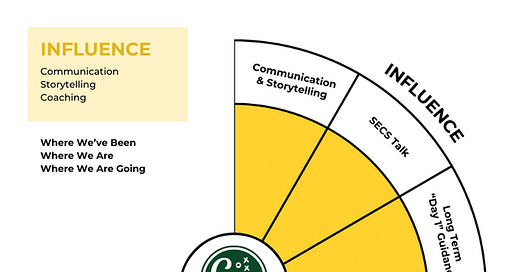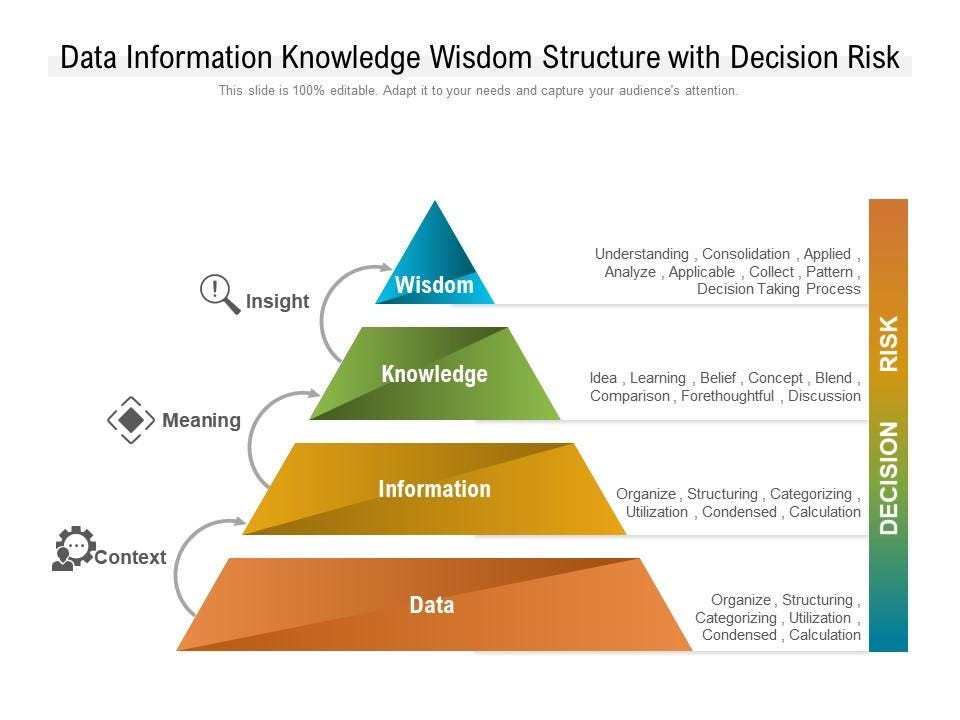This week I’m rounding out the final corner of Cook’s PlayBooks - Top Level Leadership Framework: Influence and Communication.
It’s time to be BOLD and PROVOCATIVE. While you can be a great Strategist (corner 1), Decision Maker (corner 2), and you are improving you Leadership Culture (corner 3), IF you can’t Influence with great Communication skills, you are likely being relegated to being a great Team Manager vs becoming a great Company Leader.
We have definitely entered the era of influencing. In my mind, the concept of “Social Media Influencer” (SMI) is less than 10 yrs old. If you are under the age of 25, you have a distinct advantage of being an SMI native with much of your daily routine being Instagram, TikTok, YouTube. If you are between the ages of 22-35, you have native social media influencing skills but those have been typically learned from Twitter and Facebook. Influencing in business is similar but different than pure online. It’s now time to take these learned SMI skills and to translate them into more face-to-face skills. If you are over the age of 35, invest more of your time into greatly enhancing your verbal and written communication skills to increase your influence with your other company leaders.
As I started to think about what it takes to become a “Social Media Influencer” (SMI), I amalgamated my own definition of a SMI:
SMI = A content creating person who establishes credibility based on their authority, knowledge, or simply entertaining engagement with a particular audience. The SMI creates a following and influences their followers opinions, behaviors, and purchasing decisions with content that informs, educates, or entertains and creates a desire to share the content with others.
The keywords are “content,” “credibility,” “knowledge,” “audience,” “entertainment,” “following,” and “sharing.” You need to show up with most of these attributes in my view to be an effective influencer.
Now let’s also define INFLUENCE more broadly from the dictionary… Influence being the topic of this week’s newsletter.
“Influencing is the use of communication to transmit knowledge and to impact the ideas, emotions, motivations, and actions of others. Influence is a fundamental social skill that usually starts with personal relationships”
My own leadership career has been heavily based in Finance and Operations and I’ve coached my teams for the last 15+ years that everyone on our finance and operational teams needs to lead with INSIGHTS and NOT JUST DATA. Moreover, my teams heard from me that we need to create Decision Influence by Storytelling the Data and specifically by starting the story with Key Insights.
I believe the best finance leaders progress through their respective careers along this learning curve of translating Data to Insights / Wisdom.
Therefore my definition of “Financial Influence” = “The Ability to Communicate Data into Insights/Wisdom in order to Create, Challenge, and Course Correct Decisions.”
The Finance Team is the only real team who sit at what I call the Unique Intersection of Data in an organization; an intersection where all the organization’s people and spending activities are recorded as data points. The goal of a great financial leader is to translate this data into unique insights of the intersecting data points across employees, departments, customers, internal op ex spending, revenue, and cash.
How to Influence? Actively practice communicating better:
One of the most critical requirements for Influence is effectively communicating. One framework I’ve curated in my Best Of files is what I’ve named the RUB 3D’S (I name things so I can remember them).
COMMUNICATION PLAYBOOK #1: CREATE THE RUB
Create the RUB (Relevant, Urgent, Big Stakes): Great communicators make what they are about to say extremely Relevant, Urgent, and communicate what’s at Stake (“Leading with Why”).
DEFINE and Highlight Winning vs Losing: Now that you have your audience’s attention, the next step is to clearly define Winning vs Losing. This can be done with Columns, Tables, or as simple as a whiteboard T-Chart (“Winning” = left side of “T”; “Losing” the right side).
DESIRABLE. Point to future. Storytell your vision highlighting the desirability of winning no matter how difficult. Now that you’ve defined Winning, connect more deeply with your audience on just how emotionally desirable the future outcomes are. Humans have the remarkable ability to go through extreme difficulty if the final outcome is desirable enough.
DATA-based Evidence. The next step is your communication is to wrap up your communication with data examples (comparison data, benchmarks, or other evidence) that cements your original RUB and once again repeats why your argument is so Relevant, Urgent, and Big Stakes.
SILENCE. The final step is to now pause. Try to stay silent for a full 10 seconds. If you are awesome at this go for 20 seconds. What seems like an eternity in your own head is actually allowing your audience (your listener) to absorb what you just said. The end goal of the silence is to have them confirm or ask questions or respectfully challenge your assertions. Silence Creates Engagement. If there is one and only one take away from this post, this may be the one for most. To me this was the “unlock key” to my own influence. What seems extremely painful in the moment becomes extremely powerful when your audience engages… and they can’t engage when you keep talking!
COMMUNICATION PLAYBOOK #2: SPEAK THEIR LANGUAGE:
Step outside of yourself. Seek 1st to understand before being understood.
Sit in the other person’s or “the room’s” seat.
What is the audiences perspective of the current situation?
Why do they hold that perspective?
What is the audience’s likely objections and areas of resistance?
What does room (or person) need to hear?
What language do you need to use so the audience “hears you” and “understands you?”
Conclude-summarize with the Why or 1st Principles to ensure everyone is aligned on the future desired outcome, the priorities required to obtain this future state, and the overall difficulty or risk.
EXAMPLES of speaking the other person’s or audience’s language?
CEO Language
Are We Making our Revenue Numbers?
How Do We Make Decisions Faster?
Why Do We Have So Many People?
Are Our Employees Working Hard Enough or Being Productive?
Do We Have Enough Cash?
Board Language
Blah, Blah, Blah… Revenue Growth
Blah, Blah, Blah… Cash Burn and Cash Runway
Blah, Blah, Blah… Strategy
Direct Team; Exec Team? All company meeting (Employees)?
Are We Winning?
Success Metrics
What Does This Mean for Me? My Department? My Team?
Communication Summary:
Who is in the Room?
What Do They Want/Need to Hear?
What Do You Want the Audience to Remember? (3 or Less Things)
Provide 3 (or Less) Key Insights or Evidence to Your Audience
In my Decision Making Series, I wrote about Decisions being the currency of your Leadership. Using this framing, Influence has its own currency as well. The basis of the “Influence Currency” are Behaviors.
More PlayBooks Below…pretty epic but you must subscribe
Keep reading with a 7-day free trial
Subscribe to Cook's PlayBooks to keep reading this post and get 7 days of free access to the full post archives.








